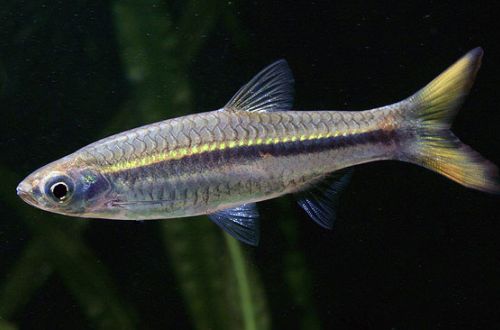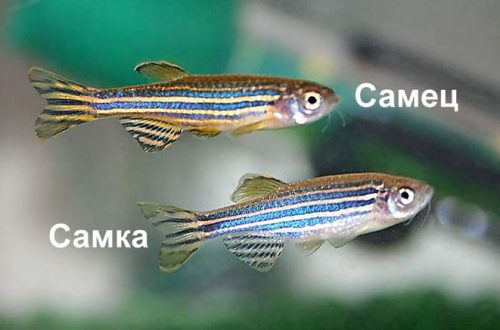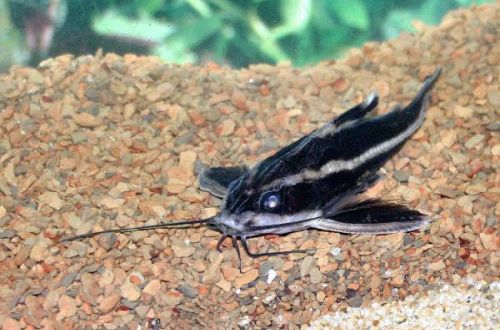
Rasbora Duson
Rasbora Dusonensis, scientific name Rasbora dusonensis, belongs to the Cyprinidae family. This fish was considered a variety of Rasbora Tornieri until 2013, until it was identified as a separate species. Easy to keep, not whimsical, perfectly compatible with other freshwater fish. May be recommended for beginner aquarists.

Contents
Habitat
It comes from Southeast Asia from the peninsular part of Malaysia and from the islands of Borneo and Sumatra. In the natural environment, it is found in various environments from flat rivers with clear water to stagnant swamps, as well as artificial reservoirs – ponds and reservoirs.
Brief information:
- The volume of the aquarium – from 100 liters.
- Temperature – 20-26°C
- Value pH — 4.0–7.5
- Water hardness – soft (1-12 dGH)
- Substrate type – any
- Lighting – any
- Brackish water – no
- Water movement – any
- The size of the fish is 9–10 cm.
- Food – any food
- Temperament – peaceful
- Content in a group of 6 individuals
Description
Adults reach a length of about 10 cm. Outwardly, it resembles its closest relative Rasbora Tornieri, which is why they were not distinguished for a long time. The differences lie in the shade of the fins and tail, the Rasbor Duson is dominated by yellowish colors. Otherwise, they are almost identical, they have large silvery scales, and a double horizontal stripe of dark and golden colors runs along the body. Sexual dimorphism is weakly expressed and consists in the size of males and females, the latter are somewhat larger.
Food
In the home aquarium, it will accept most popular foods (dry, frozen and live). It is recommended to combine different types of products, for example, flakes and granules in combination with bloodworms or brine shrimp.
Maintenance and care, arrangement of the aquarium
The optimal size of the aquarium for a small flock of these fish starts from 100 liters. Decoration is not critical given the wide natural habitat. Duson Rasboras will feel great even in an empty tank.
The maintenance of the aquarium is standard, it consists in regular cleaning of the soil and decorative elements, weekly replacement of part of the water with fresh water, monitoring the concentrations of nitrogen compounds and maintaining stable hydrochemical values. An important point is the presence of a lid to avoid accidental jumping of fish from the aquarium.
Behavior and Compatibility
A peaceful schooling fish able to get along with many other non-aggressive species of comparable size. It is recommended to keep at least 6 individuals in a group – the more, the better. Single fish can become unnecessarily “shy”.
Breeding / breeding
At the time of writing, there is no reliable information about breeding Rasbora Duson in home aquariums. However, this is not due to the complexity of the process, but to the fact that these fish were relatively recently (in 2013) identified as an independent species.
Breeding should be similar to Tornieri Rasbora. In favorable conditions and with a sufficient number of fish, spawning can occur regularly. Eggs disperse in the water column and settle on the surface. The incubation period lasts from 24 to 48 hours depending on the water temperature. There is no parental care, so future juveniles face many dangers in the common aquarium. It can be eaten, including by the parents themselves, and those who are lucky enough to appear will most likely lack food.
It is possible to increase the survival rate of fry by timely moving them to a separate tank with identical water conditions. Such spawning aquariums are usually equipped with a simple airlift filter with a sponge and a heater, and shade-loving mosses and ferns are used as decoration. They are fed with specialized microfood and/or brine shrimp nauplii.
Fish diseases
In a balanced aquarium biosystem with suitable water conditions and regular maintenance, fish health problems usually do not occur. Illnesses can be the result of improper care or injury. Read more about symptoms and treatments in the Aquarium Fish Diseases section.





